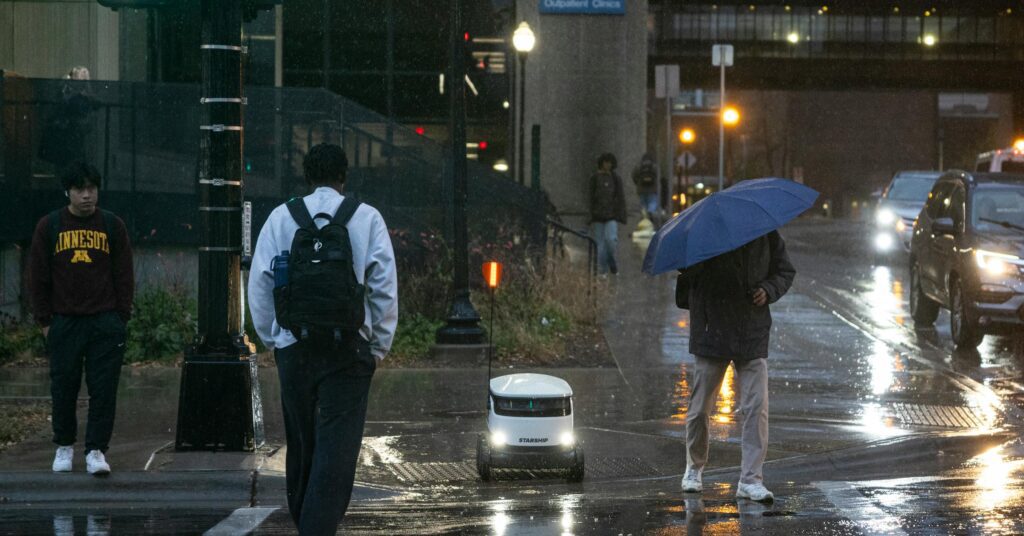The Robot Revolution: Sidewalk Delivery Devices at the U of M
Last year, the Minneapolis City Council gave the green light to an innovative pilot program allowing the University of Minnesota’s Twin Cities campus to experiment with “personal delivery devices”—better known as sidewalk delivery robots. This initiative kicked off last September, setting the stage for a trial run where the university aimed to deploy six to ten of these robots to handle food and beverage deliveries from Coffman Memorial Union to various East Bank buildings.
A New Way to Deliver
If you’re curious about what these robots look like and how they operate, you’re not alone! According to a 2021 white paper from the Minnesota Department of Transportation (MnDOT), these autonomous delivery devices range in height from 2 to 6 feet and can weigh anywhere from 40 to 500 pounds. Designed to navigate sidewalks using cameras and GPS, they can zip along at speeds of up to 25 mph—though the University has capped theirs at a leisurely 5 mph for safety.
MnDOT believes these robots hold great potential—not just for quick deliveries but also for helping reduce greenhouse gas emissions. Since they typically run on electricity, these bots can play a significant role in cutting down the number of cars hitting the road for food runs.
Midway Insights Spark New Questions
As we reach the halfway point of this one-year pilot program, the City Council has started to take a closer look at how things are shaping up. A recent vote by a council committee prompted city staff to dive into research about the robots, their influence on workers across the country, and their impact on the University campus thus far. Council Member Robin Wonsley, who initiated this inquiry, is looking for a comprehensive report, set to be delivered by April 9. This report will include a “high-level overview of responses from labor organizations” regarding the implementation of these new food delivery technologies.
Wonsley’s concerns are echoed by many workers, who worry that this new tech might enter an unregulated space, potentially jeopardizing jobs and working conditions. The push for regulation isn’t just about the robots but also about ensuring that this technology enhances life on campus rather than complicating it.
Local Flavor and Future Prospects
Imagine ordering your favorite coffee from the café at Coffman Memorial Union, and instead of waiting in line, a little robot rolls up to deliver your order. It’s a cool vision that seamlessly blends technology with everyday life on campus. However, as we navigate this new frontier, ensuring that all stakeholders benefit is crucial.
As more cities consider similar technologies, the experience at the University of Minnesota could serve as a blueprint—or cautionary tale—for others. We live in an age where technology is rapidly shifting the ways we live and work, and staying ahead of the curve is essential for communities.
Conclusion: Navigating the Future
The dialogue about these delivery robots raises pivotal questions about the intersection of technology and employment, innovation and regulation. While the promise of improved efficiency and sustainability is enticing, the conversations sparked by Council Member Wonsley remind us to remain vigilant when integrating new technologies into our communities.
The AI Buzz Hub team is excited to see where these breakthroughs take us. Want to stay in the loop on all things AI? Subscribe to our newsletter or share this article with your fellow enthusiasts.




